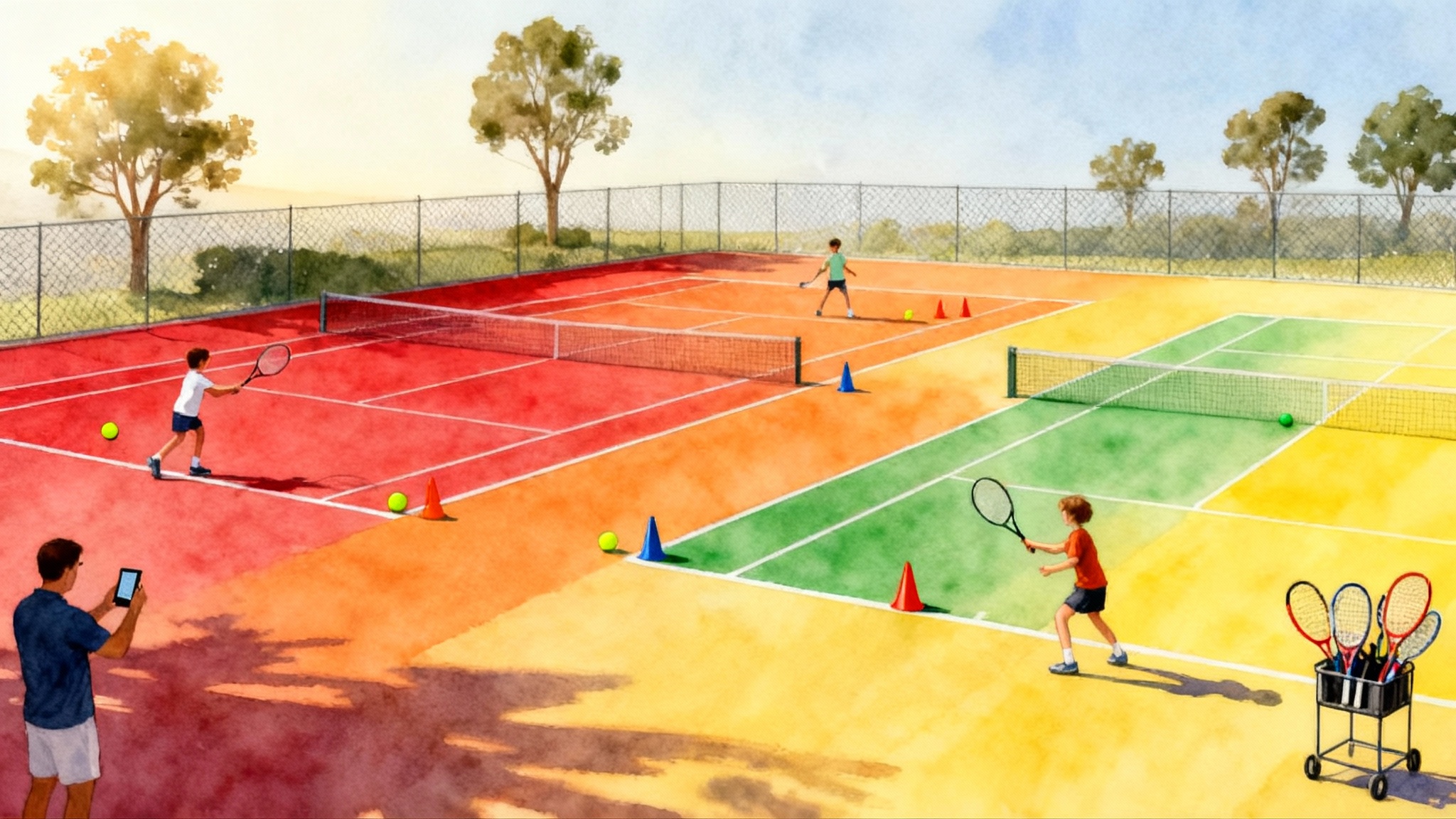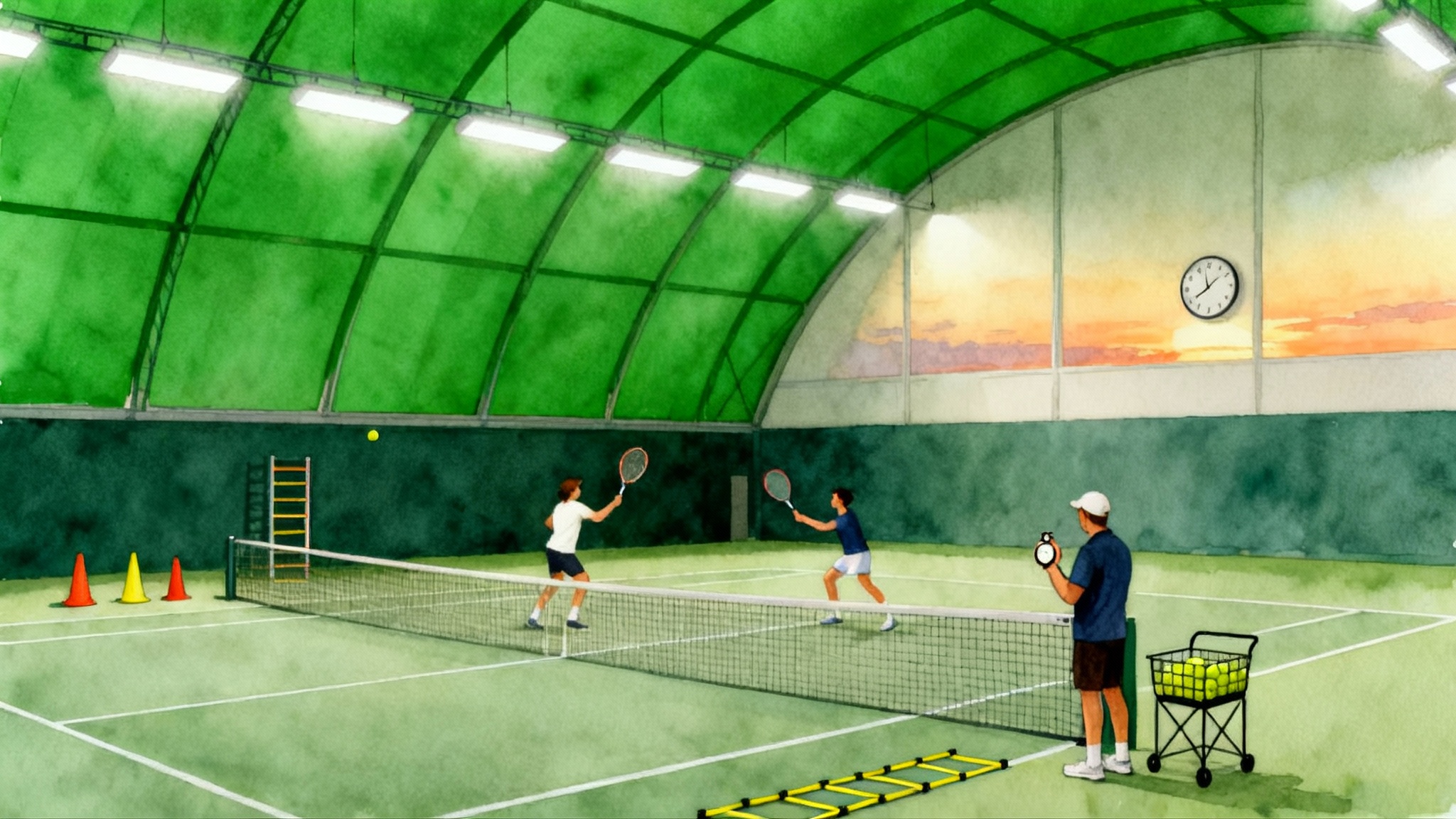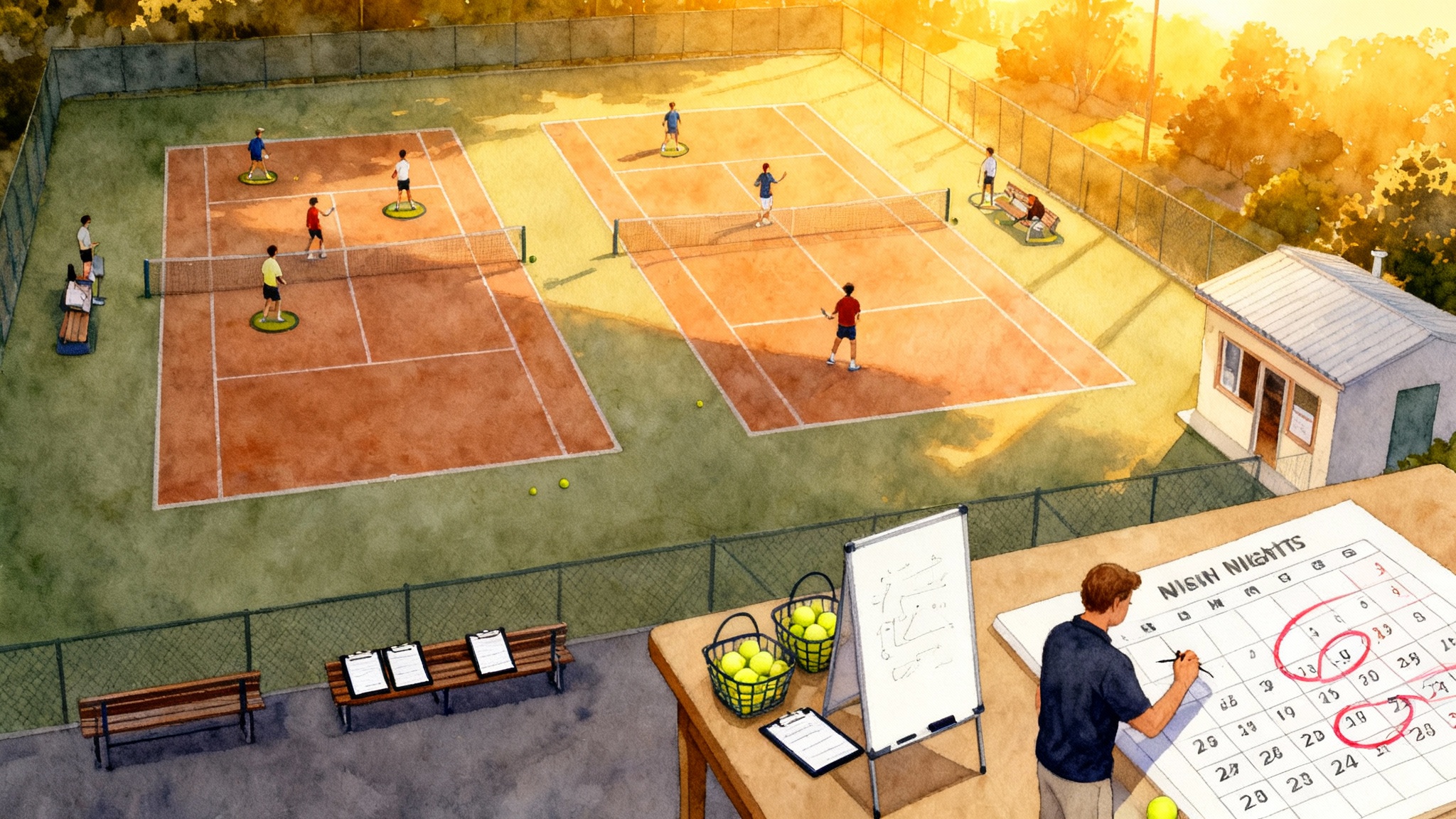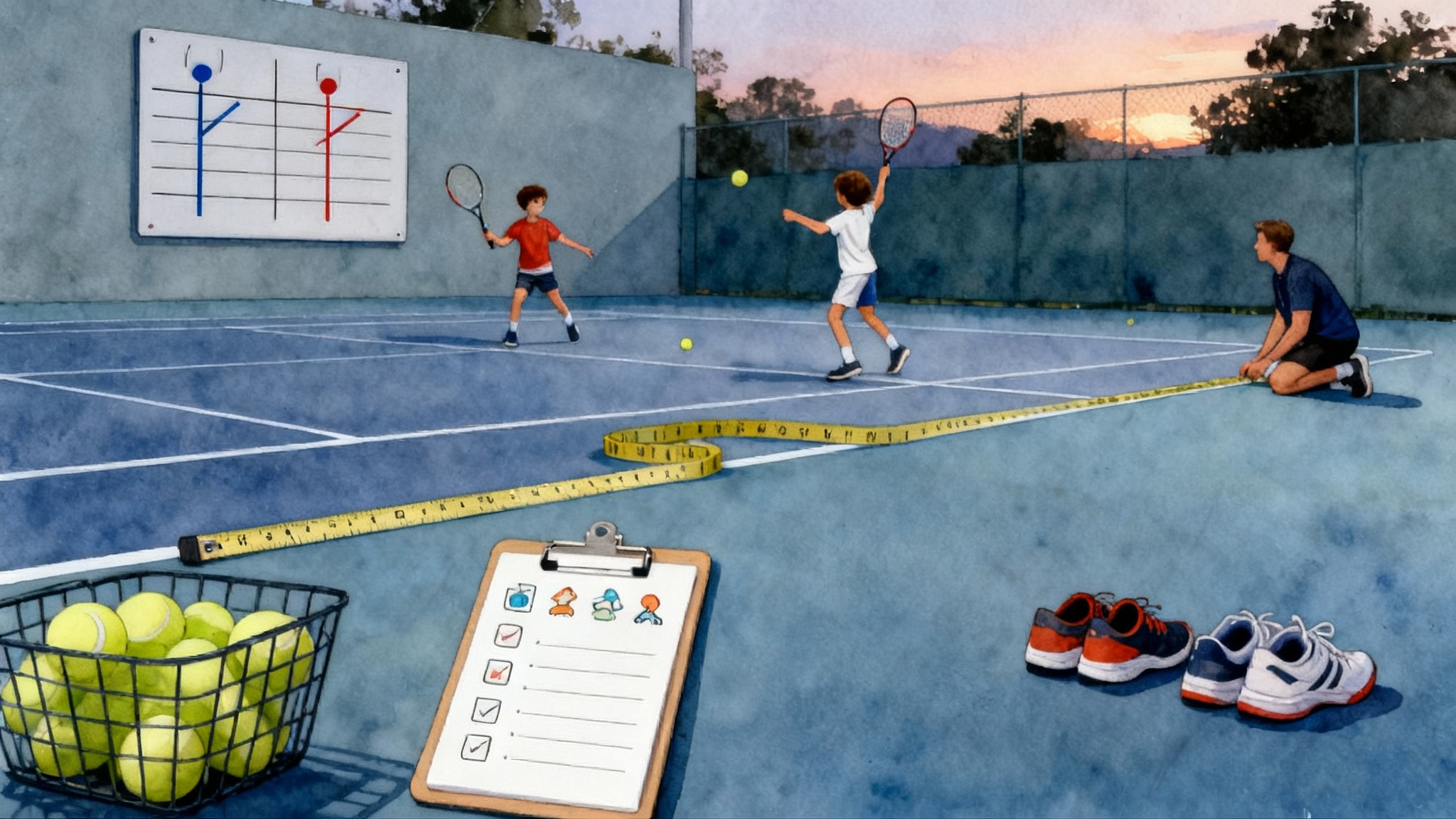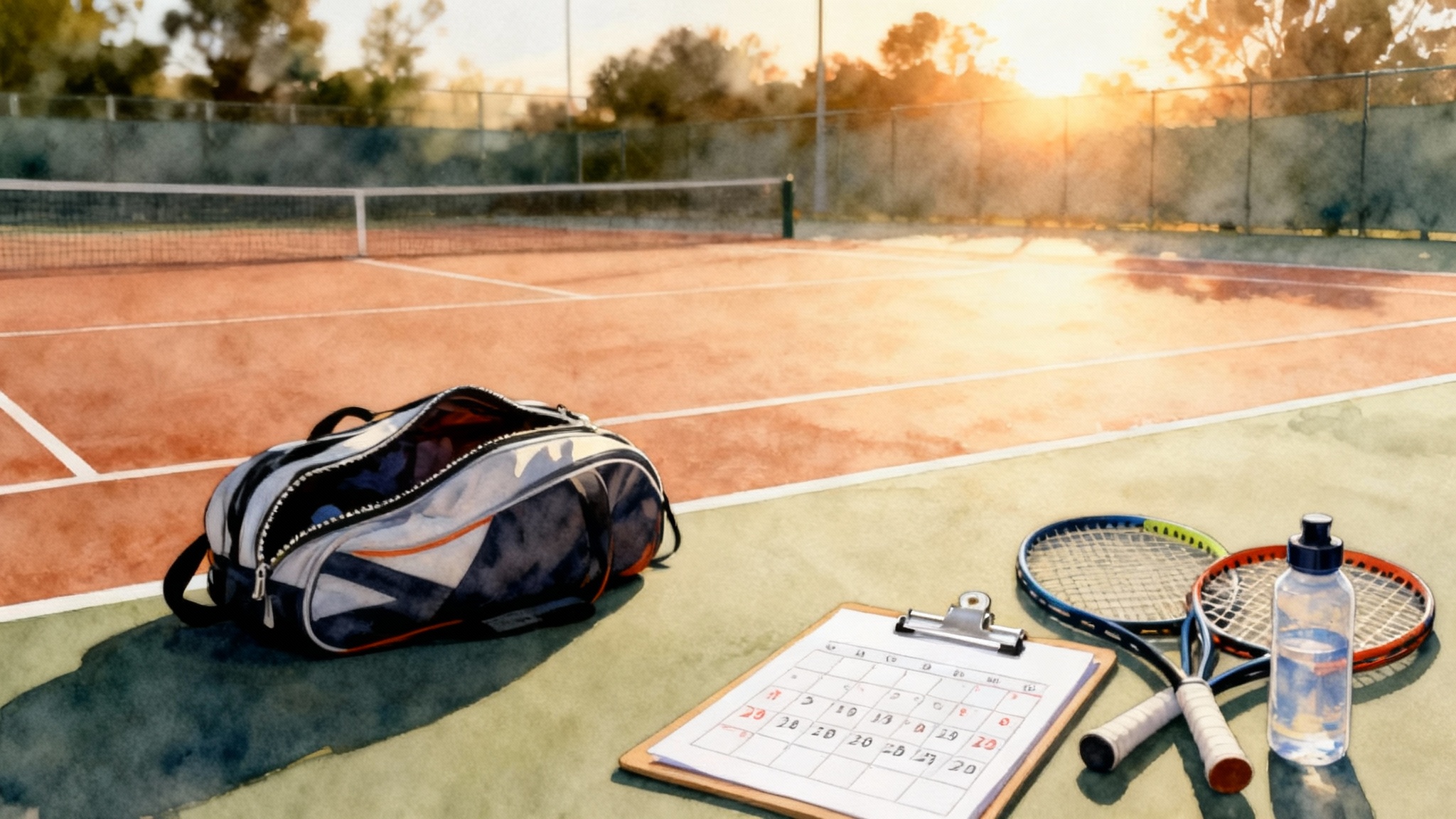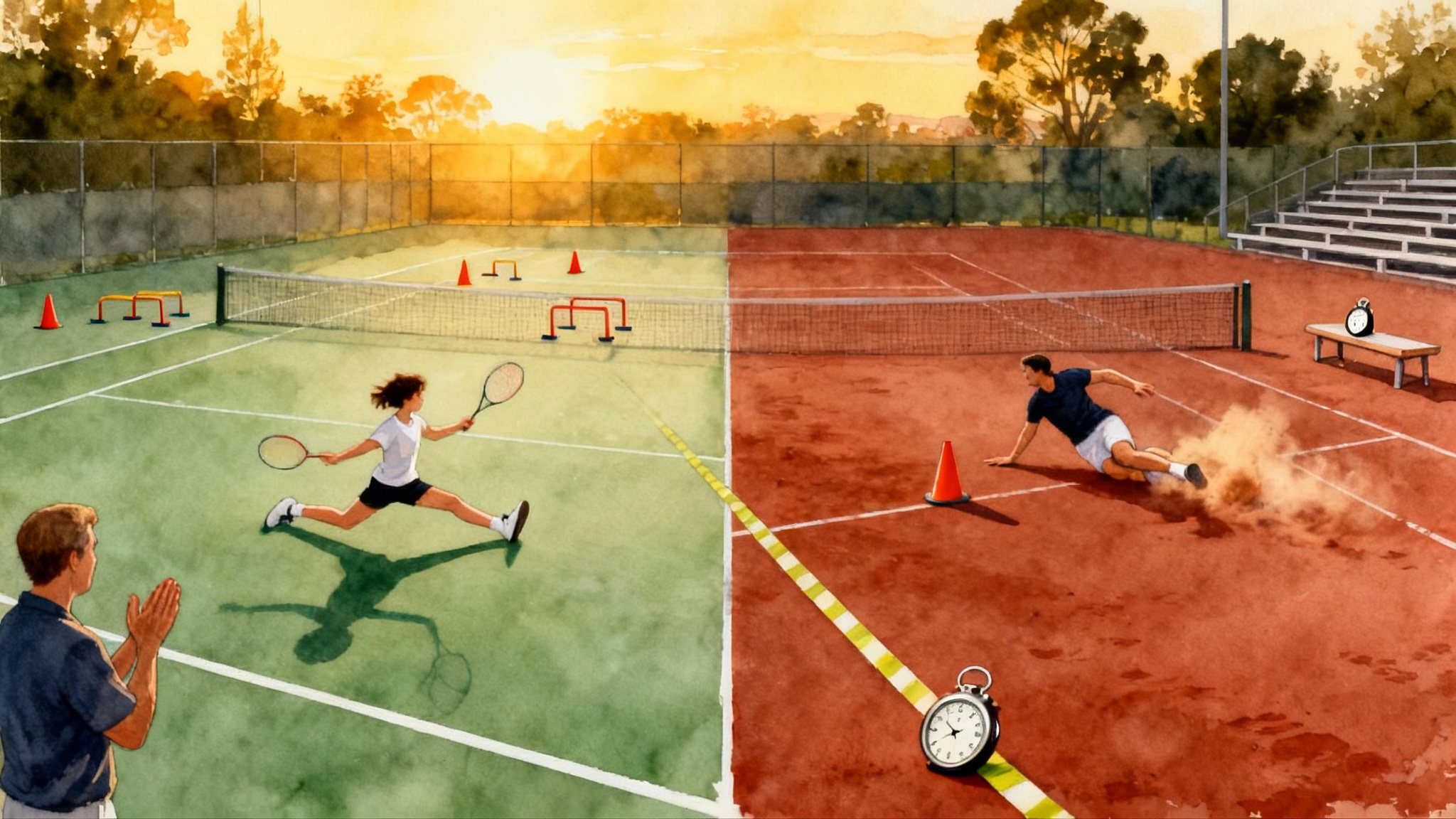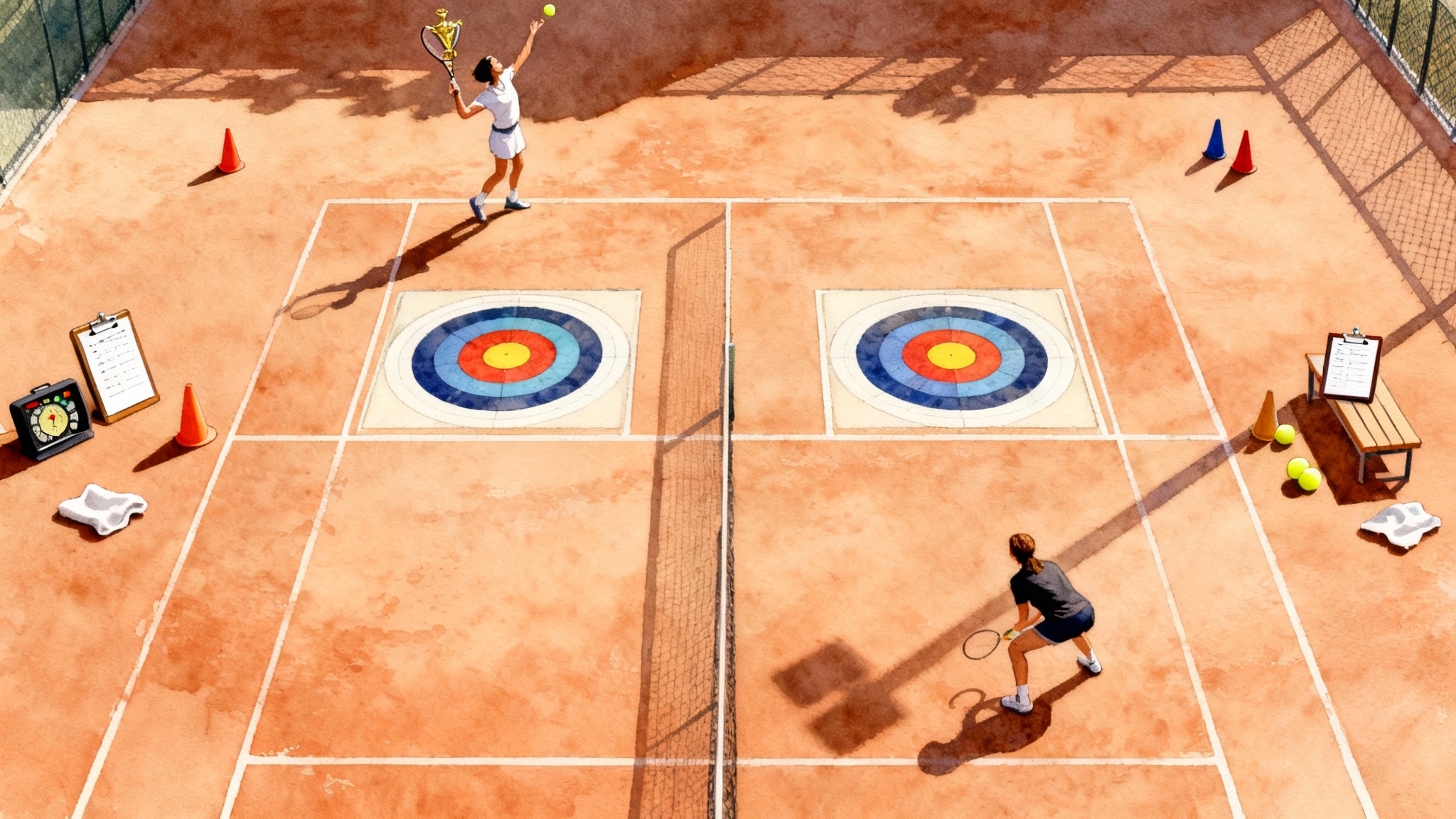Tournament-Day Tennis Fueling 2025: Hydration, Snacks, Plans
A practical, evidence-based playbook for juniors, parents, and adults. Use clear carb, fluid, and sodium targets, adjust for heat or indoor events, and follow simple menus, pack lists, and timelines.

Why tournament-day fueling matters in 2025
Tennis tournaments stack stress. You may play two or three matches with short turnarounds, often in heat and humidity, sometimes indoors with dry air that pulls moisture from your mouth and skin. A smart fueling plan steadies energy, keeps your brain sharp for point decisions, and protects against cramps and late-match fade. The goal is simple: start topped up, keep pace with losses, and finish ready to go again.
The simple numbers: carbs, fluids, sodium
To make this useful for real families and busy adults, here are practical targets with body weight and sweat rate in mind. When you see units, we define them once and use them consistently: grams g, kilograms kg, milliliters ml, milligrams mg.
-
Carbohydrates for match day
- Daily baseline around tournament time: 5 to 7 g per kg body weight. Heavy tournament days or back-to-back matches can push you toward 6 to 8 g per kg.
- During play and between matches: 30 to 60 g per hour for most players. Advanced adults who tolerate higher intakes can use up to 90 g per hour with mixed carb sources and gut training. Juniors should stay on the lower end and spread intake over many small bites.
-
Fluids before and during play
- Four hours before your first match: 5 to 7 ml per kg body weight of fluid. If urine remains dark or minimal, add another 3 to 5 ml per kg about two hours before. These follow the ACSM exercise and fluid replacement guidelines and are a solid starting point for tennis.
- During play: try to replace 60 to 80 percent of your sweat losses. Most players fall between 0.4 and 1.0 liters per hour. Small, steady sipping beats chugging.
-
Sodium
- Typical starting range is 500 to 1000 mg sodium per liter of fluid during play. Heavy or salty sweaters may need more. You can meet this with sports drinks, electrolyte powders, or a mix of salty foods and water.
Quick math by body weight
- 40 kg junior
- Four hours pre-match: 200 to 280 ml fluid
- Hourly during play: 12 to 24 g carbs to start, progress toward 30 to 40 g if tolerated
- 60 kg teen or adult
- Four hours pre-match: 300 to 420 ml fluid
- Hourly during play: 30 to 60 g carbs
- 80 kg adult
- Four hours pre-match: 400 to 560 ml fluid
- Hourly during play: 45 to 75 g carbs if well tolerated
How to measure your sweat rate in one practice
- Weigh yourself dry before practice, minimal clothing.
- Track all fluid you drink in ml. Note any urine.
- Weigh yourself dry after practice.
- Every 1 kg of body mass lost equals roughly 1 liter of sweat. Add the ml you drank, subtract urine, and divide by practice duration to get liters per hour. That number guides your in-match fluid target.
The 24-hour pre-match plan
Arrive topped up in muscle glycogen and hydrated without feeling bloated.
-
Dinner the night before
- Focus on carbohydrate rich and familiar foods: rice bowls with lean protein, pasta with tomato sauce and grated cheese, baked potatoes with olive oil and salt, sushi with extra rice, burrito bowls with extra rice and beans. Aim for 2 to 3 fist sized servings of carbs.
- Include salt to taste. If you often cramp, add a moderate salty side like pretzels or a small bowl of soup.
- Fluids: sip water with dinner and one electrolyte drink if the next day will be hot and humid.
-
Late evening snack
- A simple carb focused snack helps top up stores without stomach heaviness. Options: banana with a small yogurt, oatmeal with honey, toast with jam, applesauce pouch.
-
Sleep
- Protect 8 to 9 hours for juniors and 7 to 9 hours for adults. Recovery hormones and glycogen storage are helped by sleep quality.
Morning of the match
Match start times move, so use a flexible window.
-
Three to four hours pre match breakfast
- Carbs 1 to 3 g per kg body weight. Keep fat and fiber modest to speed digestion. Examples: bagel with thin peanut butter and honey, oatmeal with banana and maple syrup, rice and eggs with soy sauce, Greek yogurt with granola and berries, pancakes with fruit and a little syrup.
- Fluids: 5 to 7 ml per kg body weight, as above. Add 300 to 600 mg sodium if you are a salty sweater or expect heat.
-
Caffeine for adults only
- Adults can consider 1 to 3 mg caffeine per kg body weight taken 30 to 60 minutes before the warm up. Stay within a daily limit of about 400 mg caffeine for healthy adults, as advised by the FDA caffeine guidance for adults. Juniors should avoid caffeine unless guided by a pediatric sports physician or dietitian.
-
One hour pre match top up
- 200 to 300 ml of a 6 to 8 percent carbohydrate sports drink, or water plus an easy carb like a small banana or a few chews. If you struggle with salty sweat, add 300 to 500 mg sodium through a sports drink, electrolyte powder, or a salty snack.
During warm up and on changeovers
-
Keep a bottle plan
- Bottle A: 500 to 750 ml of a 6 to 8 percent carbohydrate drink with 500 to 800 mg sodium per liter. Taste should be pleasant, not syrupy.
- Bottle B: 500 to 750 ml water plus an electrolyte tab if your drink is low in sodium. On hot days you may carry two sets per match.
-
Sip pattern
- Warm up: 3 to 4 swallows before first ball.
- Changeovers: 150 to 250 ml per changeover in heat and humidity, less if cool and indoor. Never wait until thirsty to drink.
-
Carbohydrate bites
- Use small, frequent pieces to keep the gut comfortable: 1 to 2 energy chews, a few pretzels, half a banana, a couple of sips of drink. Aim to reach your hourly carb target by the end of the set.
Between matches
Your priorities are to rehydrate, refuel, and settle the stomach. Think sequence: drink, eat, rest, move.
-
First 15 minutes
- Weigh if possible to estimate losses. Drink 500 to 750 ml over 15 to 30 minutes, with 500 to 1000 mg sodium per liter. If urine is clear and you feel sloshy, back off and pace the rest.
-
Next 30 to 60 minutes
- Carbs 1 to 1.2 g per kg body weight if your next match is within two hours. Choose quick digesting options: rice bowl with soy, bagel with jam, instant oats with banana and honey, drinkable yogurt, sports drink plus a bar.
- If you have 3 or more hours, add lean protein for recovery: turkey sandwich, rice and chicken, yogurt with granola. Keep fat and fiber moderate.
-
Last 20 minutes before the next warm up
- Small top up: 100 to 200 ml fluid, a few chews, or half a banana. Confirm you have two fresh bottles for the court.
Hot humid outdoor versus indoor events
-
Hot and humid outdoor
- Expect higher sweat rates and slower evaporation. Push the upper end of your in-play fluid plan. Use higher sodium concentration, 800 to 1000 mg per liter if you are a salty sweater. Keep carbs mostly in drink and easy bites.
- Cooling: shade, ice towels on neck and forearms, cold fluids. Use light colored clothing, a breathable hat, and sunscreen that does not sting eyes. Families competing in Florida can review our Florida heat protocols and build the week accordingly.
-
Indoor play
- Air conditioned venues may feel cool but indoor air is often dry, so dehydration still happens. You may need less sodium than a steamy outdoor day, but keep the same changeover sip habit. If stomach feels sloshy, switch more carbs to bites and less to drink. For seasonal transitions, see the Outdoor-to-Indoor Tennis 2025 playbook.
Junior safe choices versus adult specific options
-
Junior safe
- Stick with familiar foods. Emphasize drinkable carbs and small bites. Avoid caffeine unless a pediatric professional gives the green light. Choose lower acid options to protect the stomach.
- Examples: water plus electrolyte powders designed for kids, diluted sports drinks, bananas, applesauce, pretzels, rice balls, fruit gummies, low fat yogurt.
-
Adult specific
- You can use caffeine within the dose above. Test your dose at practice, never first on match day. Consider higher carb per hour if you have trained your gut and your matches are long. Include slightly saltier drinks if you cramp often.
Sample menus and timelines
These are templates. Swap in foods your athlete already tolerates.
-
Junior tournament day, 40 to 55 kg
- 24 hours out
- Lunch: turkey and rice bowl with soy sauce and fruit
- Dinner: pasta with tomato sauce and grated cheese, side salad, bread, water plus electrolyte
- Snack: oatmeal with honey
- Morning of
- Breakfast three hours out: bagel with thin peanut butter and banana, water
- One hour out: 200 ml sports drink, a few pretzels
- During match
- Changeovers: 150 ml sports drink most changeovers, water when not thirsty
- Bites: 1 to 2 chews every 15 to 20 minutes, half banana at set break
- Between matches
- Within 15 minutes: 400 ml sports drink
- If next match is in 60 to 120 minutes: yogurt drink plus granola bar and fruit
- Evening recovery
- Dinner: rice and salmon or chicken, soy sauce, steamed vegetables, water, small dessert if desired
- 24 hours out
-
Adult tournament day, 70 to 85 kg
- 24 hours out
- Lunch: burrito bowl with extra rice and beans
- Dinner: sushi night with extra rice or rice noodles with lean beef, water plus electrolyte
- Snack: toast with jam
- Morning of
- Breakfast three to four hours out: oatmeal with berries, maple syrup, and a side of scrambled eggs; 400 ml water
- 45 minutes out: 1 to 2 mg caffeine per kg in coffee or a measured caffeine source, plus 250 ml sports drink
- During match
- Bottle A: 750 ml 6 to 8 percent carbohydrate drink with 700 mg sodium per liter
- Bottle B: 750 ml water plus electrolyte tab
- Aim for 30 to 60 g carbs per hour via drink and chews; adjust by feel and conditions
- Between matches
- Immediate: 500 ml sports drink
- If next match within two hours: bagel with jam and a yogurt
- 24 hours out
A printable tournament pack list
Print this, check items off, and keep it in your racquet bag.
-
Hydration and fueling
- Two to four 750 ml bottles with wide mouths
- Sports drink powder or ready to drink bottles
- Electrolyte tabs or packets, including a sodium heavier option
- Energy chews or gels your stomach already likes
- Bananas, applesauce pouches, pretzels, rice cakes or rice balls
- Small cooler with ice packs and a zip bag for ice towels
-
Equipment and comfort
- Two to three towels, one light colored for ice towel use
- Extra shirts, socks, hat or visor
- Sunscreen and lip balm with sunscreen
- Sunglasses and a small personal fan for shade breaks
-
Tracking and hygiene
- Portable scale if you plan to measure sweat rate at events that allow it
- Hand sanitizer, wet wipes, small trash bags for wrappers
- A fine point marker to label bottles and mix ratios
-
Paper copy of your plan
- Carb target per hour, drinking plan, sodium strategy, and what to do if stomach feels off
Troubleshooting in real time
-
Sloshy stomach
- Slow fluid rate for 10 to 15 minutes, shift carbs to chews or bites, add small sips more often. Make sure the drink is 6 to 8 percent carbohydrate, not thicker.
-
Cramps coming on
- First check pace of play and heat. Add a higher sodium drink for the next 20 to 30 minutes. Take a small salty snack with water. Stretch gently on changeovers.
-
Headache or brain fog
- You may be behind on fluids, carbs, or both. Drink 200 to 300 ml, take a 15 to 20 g carb bite, and reassess after two changeovers. If indoors, consider the dry air effect and drink consistently even if you do not feel sweaty.
-
Energy drop late in second set
- Many players underfuel from the first ball. Front load a little more next set: a few extra chews and a few extra sips in the first three changeovers.
How Celsius Tennis Academy supports you on site
Tournaments are better with a pit crew. At Celsius Tennis Academy, our coaches help athletes run their fueling plan under pressure. We set up shade, cooling, and bottle systems, and we prep parents and players with clear checklists. If you want hands on support or a personal plan, book on-site support, one on one consults, and small group clinics and camps that practice fueling and recovery between live match sets.
Build your own simple plan
Copy this template into a note on your phone. For weekly structure that integrates fueling practice, see the 2025 tennis weekly blueprints.
- My sweat rate target: ____ liters per hour
- My in play plan per set
- Changeovers: ____ ml per changeover
- Carb bites: ____ grams total per set, using ____ and ____
- Sodium plan: ____ mg per liter, source: ____
- My between match plan
- First 15 minutes: ____ ml plus ____ mg sodium
- Next 30 to 60 minutes: ____ g carbs from ____ and ____
- Last 20 minutes before warm up: ____ ml top up and a small bite
- Adult caffeine plan if used
- Dose: ____ mg, timing: ____ minutes before
A smart finish
Tournament days reward the athlete who has a plan and then treats it like a rally pattern. You do not need exotic supplements or complicated ratios. You need familiar foods, bottles that you label and refill, and a few numbers that turn guesswork into rhythm. Set your carb, fluid, and sodium targets, practice them in training, and match day becomes calmer. For indoor season adjustments, use the Outdoor-to-Indoor Tennis 2025 playbook. The result is the same result every coach wants to see at 4 to 4 in the third set. You look fresh, you think clearly, and you are ready for the next ball.
